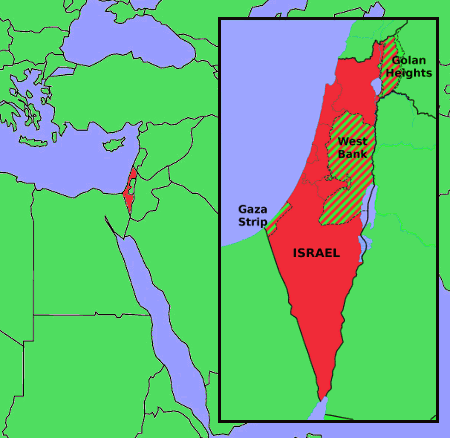
Circle the area on this map

B. Israel has land borders with Jordan on the east, Egypt on the southwest, Lebanon to the north and Syria to the northeast. Under the UN plan to create the state of Israel, "the hill country of Samaria and Judea" (including what is now also known as the "West Bank") were to be part of a proposed Arab Palestinian state. But after the 1948 Arab-Israeli War, the area was captured and ruled by what is now the kingdom of Jordan.
D. In the Six-Day War, Israel seized the Gaza and the Sinai Peninsula from Egypt and the Golan Heights from Syria. Israel still controls Gaza and the Golan Heights. After attacks by Palestinian forces based in Lebanon, Israel invaded and briefly occupied southern Lebanon in 1978. The Israelis withdrew after UN peacekeepers were sent into the area.
A. Egypt officially recognized Israel in a 1979 peace treaty in which the Israelis agreed to withdraw from the Sinai Peninsula and to enter negotiations over an autonomy for Palestinians in the West Bank and the Gaza. The movement of about 600,000 Jewish settlers into Arab areas has been called an obstacle to a “two-state” peace proposal to create an Arab Palestinian state in the West Bank and Gaza.
C. The Oslo Accords and other agreements to take steps toward an Arab Palestinian state have failed as fighting has continued between the two sides. After the UN vote, U.S. Secretary of State John Kerry said that without a two-state solution “Israel can either be Jewish or democratic – it cannot be both.” Although they are under Israel’s control, millions of Arabs in occupied territories cannot vote in Israel’s elections.